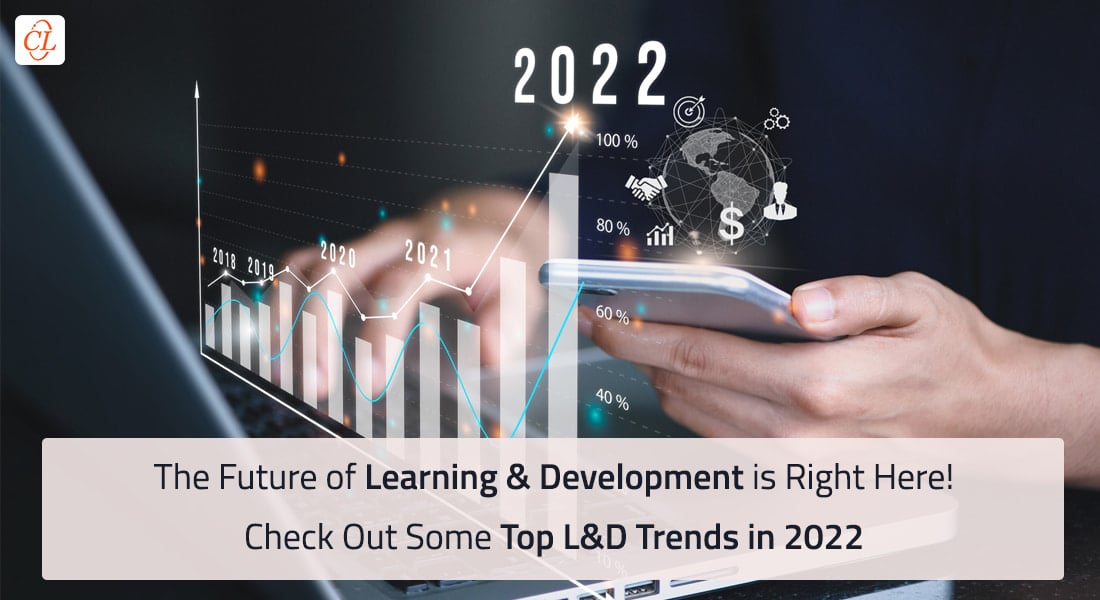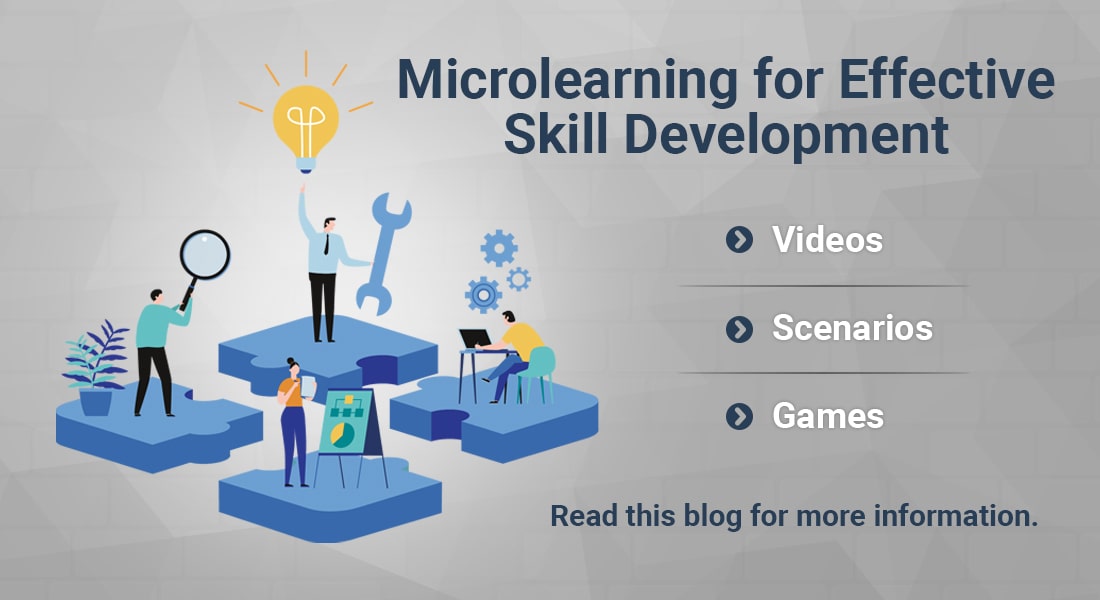Corporate L&D 2024— Challenging Trends and Strategies to Sail Through!

2024 is the beginning of yet another year that’s witnessing dynamic changes in the business scenario. The world has begun to normalize after the pandemic and businesses are slowly back on track. Learning and development (L&D) have attained a position of strategic importance. Organizations are aiming to build a learning culture in their organizations to match the fast-evolving business landscape and changing customer needs and preferences. In such a scenario, leaders need to have a strategic vision to chart the roadmap for a fruitful year ahead. Are you one of those who’s looking for insights to sail through seamlessly? Read this blog for the major trends and challenges that’ll impact L&D leaders and how should you prepare yourself for the future ahead.
Corporate L&D Space is Transitioning!
Here are the Major Trends That Will Impact L&D Leaders in 2024:
- Employer-Employee Relationships
- The Advent of New Technologies
- Persistent Skills Gap
- Maintaining Operational Efficiency
Read on to get insights on these trends and strategies to address them.
What are the Major Trends That Will Impact L&D Leaders in 2024?
1. Employer-Employee Relationships
Post pandemic, many organizations have called their employees back to offices or are emphasizing hybrid work models. However, a large percentage of employees prefer to work from home. Organizations are facing productivity issues and are striving to meet their desired targets. On the other hand, employees are complaining about flexibility issues and are reluctant to get back to the office.
2. The Advent of New Technologies
As per studies, most of the L&D leaders agree that new flash technology trends will be more frequent in the coming years. No wonder leading organizations are embracing new technologies with open arms and making the most of them.
3. Persistent Skills Gap
Let’s admit it. Skills gap is a genuine global issue and organizations are finding it challenging to sustain business performance due to persistent skills shortages. ‘Quiet Quitting’ and ‘Great Resignation’ have led to this alarming situation where HR leaders are struggling to source talents with the required skills.
4. Maintaining Operational Efficiency
The business landscape is evolving like never before. Artificial Intelligence (AI) is booming. Employees are required to learn new skills and constantly upgrade them to keep up with recent trends and technologies. Workplace productivity is the dominant success measure for organizations. In this situation, continuous upskilling and reskilling of employees is a must to maintain operational efficiency.
→ Download eBook: Align L&D with Business to Conquer the Future of Work
3 Future-Proof Strategies to Address Challenging L&D Trends

The above-discussed L&D trends are unarguably challenging. To mitigate these challenges, you need to focus on:
1. Charting Impactful Training Program for Leader and Manager Development
Good leaders can bring the best out of their teams and enhance their productivity and performance. Investing in crafting impactful leadership training programs that shape human-centric and confident leaders in the future is a smart move. After all, only a seasoned leader can drive results through innovation and collaboration.
Focus on choosing apt formats for effective training delivery. Let blended learning play its charm. The right mix of classroom and online training can work wonders. eLearning and short microlearning modules in various attractive formats can help you deliver the desired message. Instructional approaches like gamification and simulations are fantastic ways to enhance engagement in leadership training programs. Exposure to critical branching scenarios allows leaders to hone critical thinking abilities and helps leaders navigate difficult situations such as conflict resolution and crisis management. Constantly mentoring and coaching keep leaders abreast of the recent trends, pave the path for judicious decision-making, and ensure achieving desired business results.

2. Identifying the Need for Skills Development and Growth
Most of the global organizations are unprepared for the changing skills. Thanks to the advent of new technologies and trends in the corporate L&D space. Upskilling continues to be one of the top priorities for organizations to bridge the persisting skills gaps. Building competency models has become crucial to determine the mandatory skills and abilities that are necessary to perform specific job roles and functions. It is also important to do a detailed analysis of learning analytics data and reports. Competency modeling and usage of AI-enabled skills data facilitate leaders to assess existing knowledge and skills gaps more accurately and focus on the areas of training for necessary skills development.
To emerge victorious in such a scenario, you must focus on driving agile development with a dynamic skills strategy. Use a framework that allows you to flex for changing skill needs. Moreover, to keep pace with change in today’s dynamic business scenario, it’s judicious to consider AI-enabled tools and training formats to impart skills training. Craft agile learning strategies to allow flexibility to learners to develop skills at the speed and scale of need. Mapping people to projects based on skill strengths can certainly help you drive desired business outcomes.
3. Rethink L&D Design and Delivery to Match Modern Learning Needs
Today’s global workforce is multi-generational. Naturally, it’s challenging for L&D leaders to craft training programs that address a variety of learning needs, styles, and preferences. Gen Zs and millennials look for continuous opportunities for learning and growth and is a source of constant motivation for them. Busy work schedules with back-to-back meetings and increased deliverables are a few other challenges that force L&D leaders to rethink their training strategies and offer learning opportunities that meet employee expectations.
What’s the way out?
Well, here are three key focus points:
-Design engaging and interactive courses
Learner engagement is a crucial factor when it comes to online training. Make use of modern tools and technologies to design appealing and interactive courses to hook learners. Usage of gamification, augmented, and virtual reality (AR/VR) can breathe life into your content and encourage active learner participation.
-Focus on support along with consumability
Creating interactive and engaging courses is just half the job done. Ensure accessibility of the courses for easy consumption. Design responsive courses and host them on the learning management system (LMS) for easy accessibility). Make sure your employees have access to virtual resources for just-in-time learning. Also, provide access to online learning communities and forums for interaction with peers and mentors to contextualize learning.
-Craft personalized learning journeys
Every learner is unique. Make sure you design learning programs that cater to the unique learning needs, styles, and preferences of learners. Offering personalized learning pathways to learners leads to better learning, enhances learning outcomes, ensures longer retention, and boosts performance and productivity.
Watch this video to explore the top six instructional design strategies to offer unique learning experiences to your learners.
It’s a Wrap!
With time, the role of L&D is changing. It is no longer confined to merely delivering formal training through various formats. L&D leaders are now expected to identify and connect to the learning needs of learners and offer personalized learning pathways to learners. The increased need for training has augmented the probability of L&D teams expanding by tying up with third-party vendors. Having said that, the gradual shift in L&D’s role in empowering employee-led growth is foreseen soon. The focus will be on developing a learning ecosystem where user-generated training content will gain immense prominence to facilitate the personal and professional growth of employees.
L&D is transitioning from an expense to an asset for organizations. Check this eBook to discover how L&D and business can align to conquer the future of work. Grab your copy now!




![eLearning Trends for 2022 – A Thanksgiving Gift from CommLab India [eBook]](https://blog.commlabindia.com/hubfs/Imported_Blog_Media/thanksgiving-corporate-learning-and-development.jpg)
